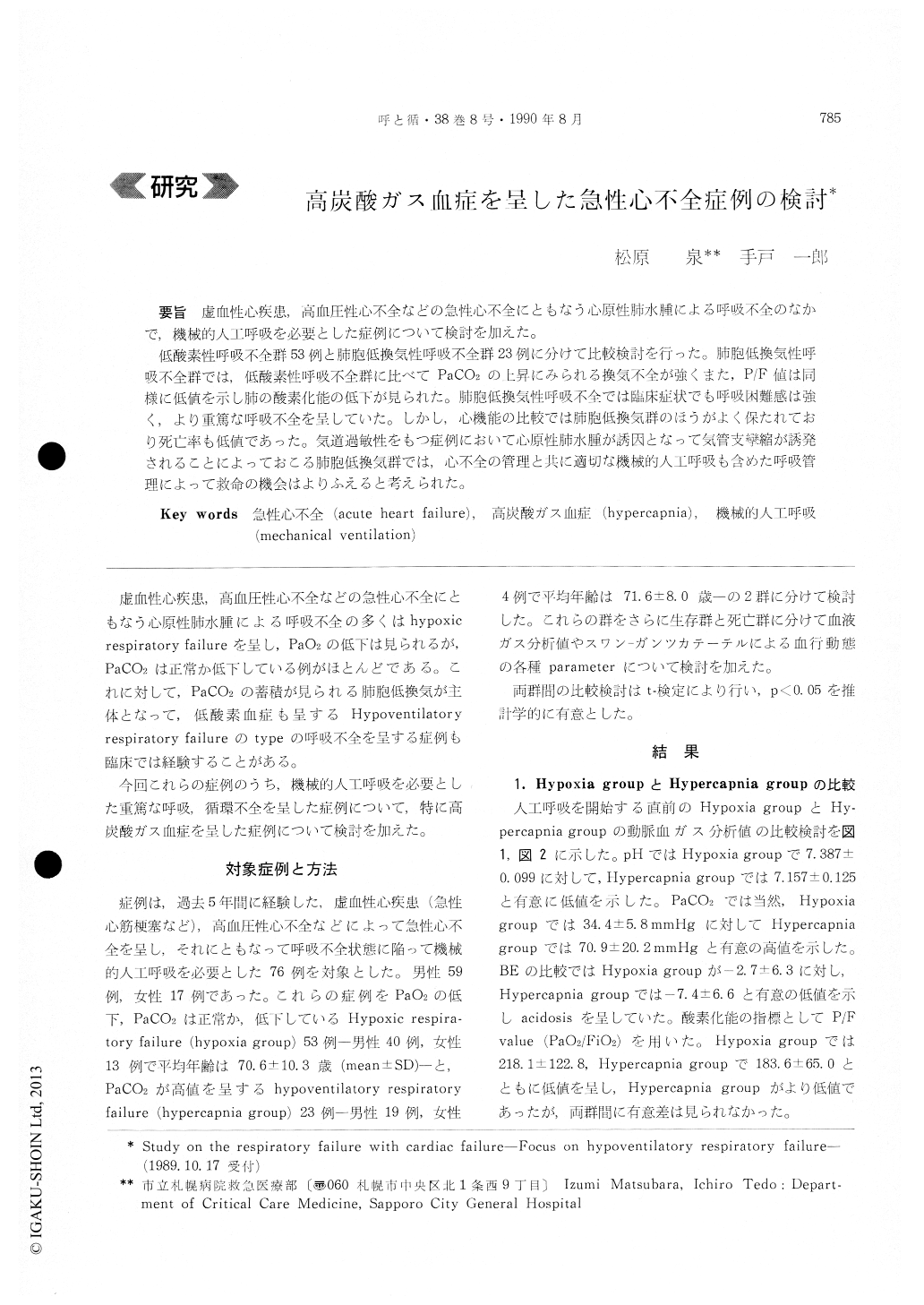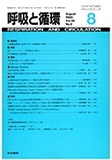Japanese
English
- 有料閲覧
- Abstract 文献概要
- 1ページ目 Look Inside
虚血性心疾患,高川血圧性心不全などの急性心不全にともなう心原性肺水腫による呼吸不全のなかで,機械的人工呼吸を必要とした症例について検討を加えた。
低酸素性呼吸不全群53例と肺胞低換気性呼吸不全群23例に分けて比較検討を行った。肺胞低換気性呼吸不全群では,低酸素性呼吸不全群に比べてPaCO2の上昇にみられる換気不全が強くまた,P/F値は同様に低値を示し肺の酸素化能の低下が見られた。肺胞低換気性呼吸不全では臨床症状でも呼吸困難感は強く,より重篤な呼吸不全を呈していた。しかし,心機能の比較では肺胞低換気群のほうがよく保たれており死亡率も低値であった。気道過敏性をもつ症例において心原性肺水腫が誘因となって気管支攣縮が誘発されることによっておこる肺胞低換気群では,心不全の管理と共に適切な機械的人工呼吸も合めた呼吸管理によって救命の機会はよりふえると考えられた。
Respiratory failure accompanied by cardiac failure occurs mostly due to decreased PaO2. However, sometimes we encouter patients with cardiac failure having on increase of PaCO2, who develop CO2 nar-cosis in the ICU. In this study we evaluated hypo-ventilatory respiratory failure in patients with cardi-ac failure.
Seventy-six patients with both respiratory failure and cardiac failure caused by instrinsic heart disease, who required mechanical ventilation in the ICU were studied.
The patients were divided into 2 groups; hypoxic respiratory failure group (n=53) and hypoventilatory respiratory failure group (n=23). Blood gas analysis and cardiovascular hemodynamics including arterial blood pressure, heart rate and Swan-Ganz catherter findings were performed before, during and after me-chanical ventilation in each patient.
Mortality rate and its relation to hemodynamic variables were also evaluated in each group.?
In both groups even when it was possible to ma-intain oxygenation capacity by conducting mechani-cal ventilation against severe respiratory failure, what can be said about the prognosis is that it de-pended totally on the improvement of cardiac func-tion. The mechanism by which hypoxemia is dis-played due to cardiogenic pulmonary edema is alrea-dy well known, but in regard to the mechanism of hypercapnia in cases with hypersensitivity of the air-ways it is thought that through induction of cardio-genic pulmonary edema bronchial spasmus is induced, and this causes hypercapnia. However, it is also pos-sible to consider cardiac asthma as the cause.?
Among respiratory failure cases due to cardiogenic pulmonary edema that occurs in association with heart failure, there is both hypoxic respiratory fail-ure as well as hypoventilatory respiratory failure. Although both display severe respiratory failure, since, in the hypoventilatory respiratory failure type, cardiac function is often well preserved, life-saving opportunities are higher in this group.

Copyright © 1990, Igaku-Shoin Ltd. All rights reserved.


